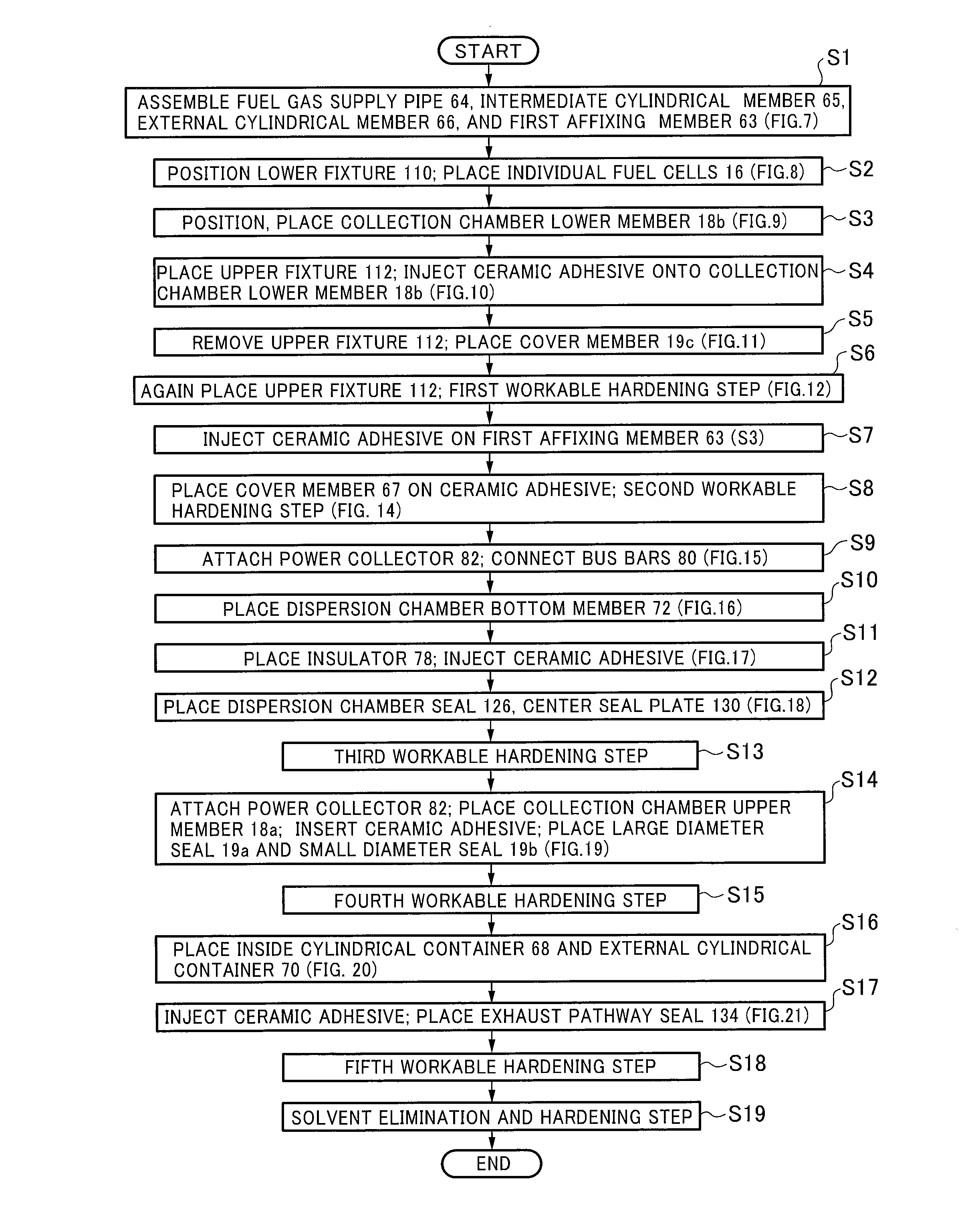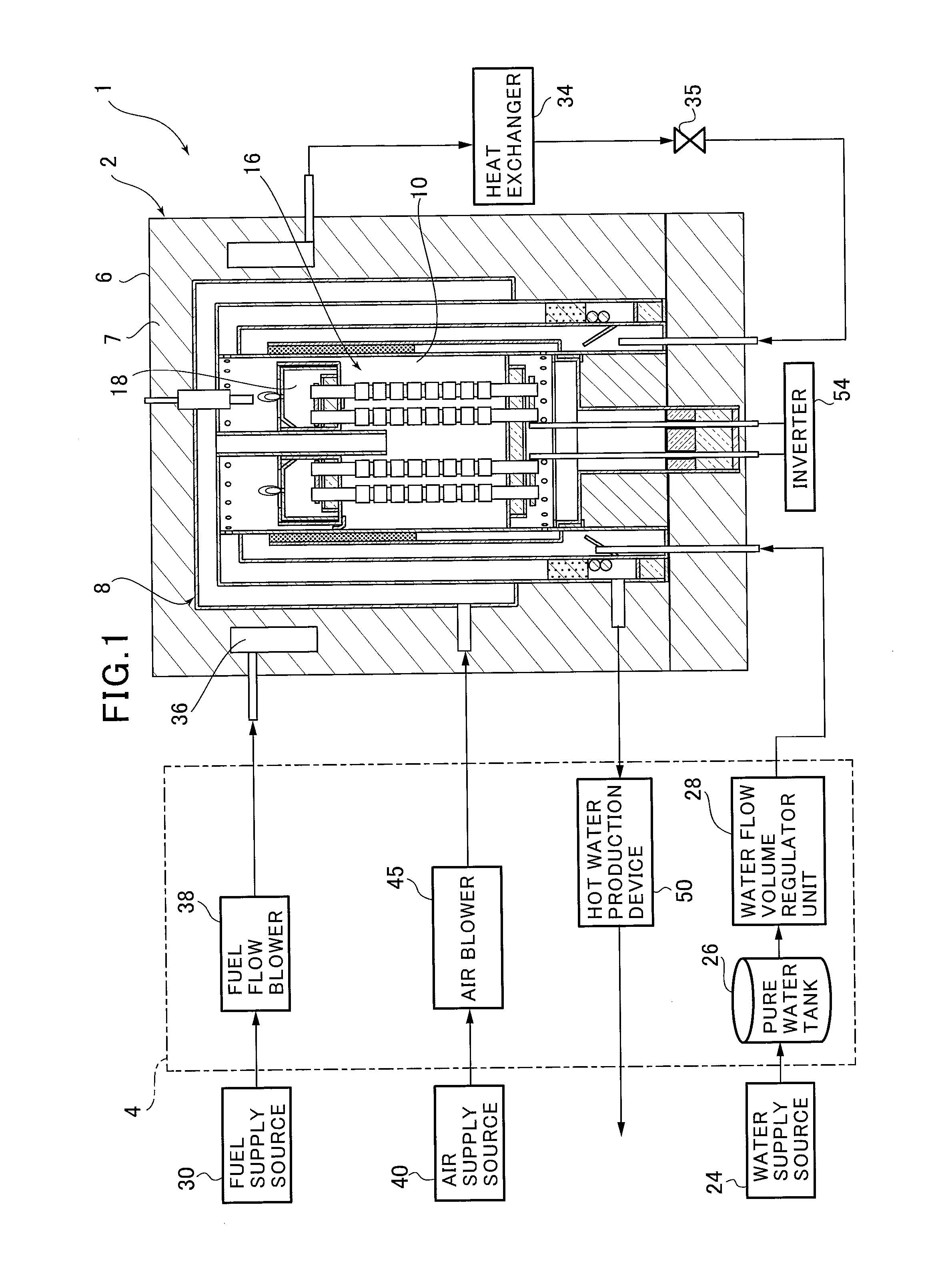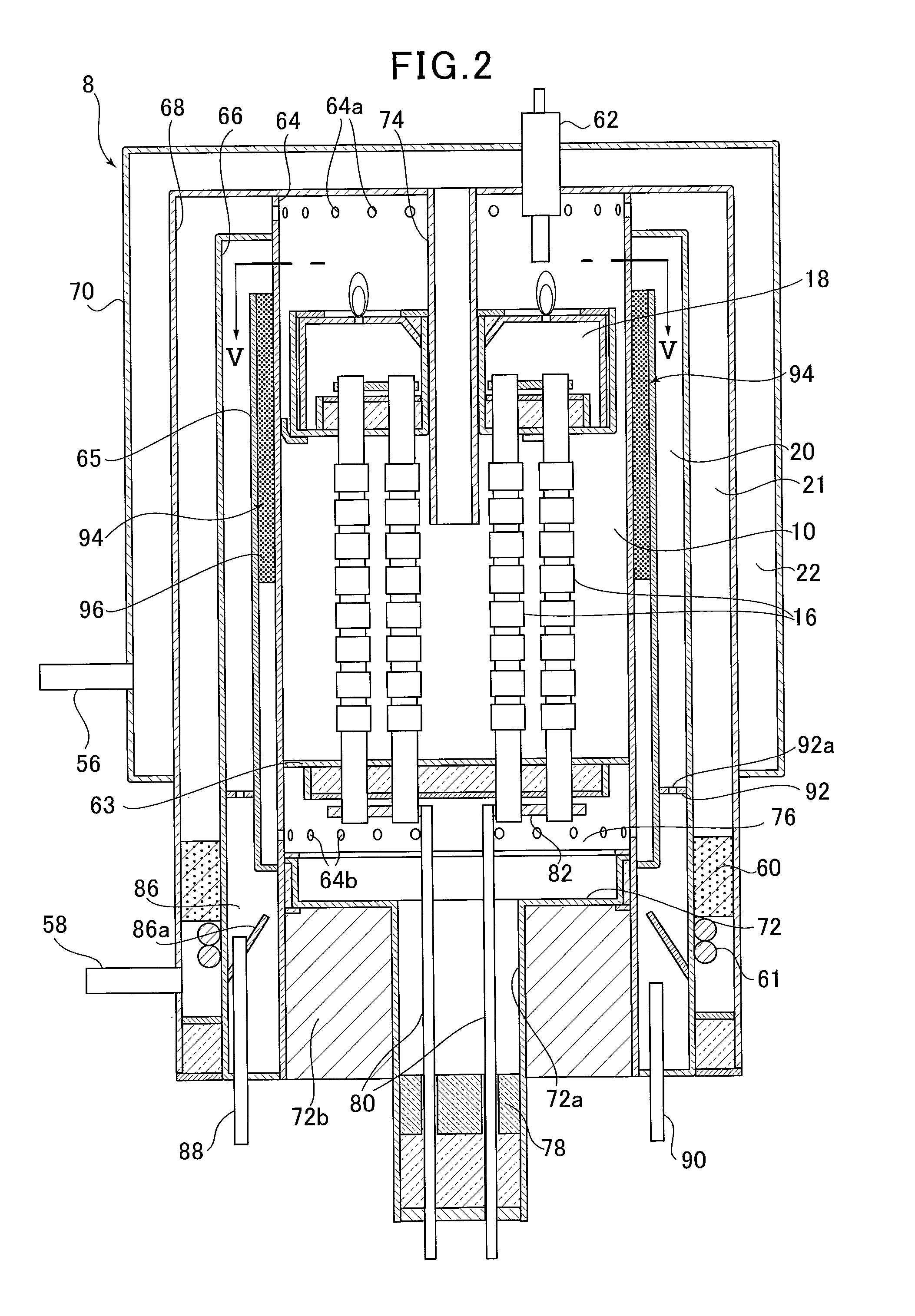Solid oxide fuel cell and manufacturing method and manufacturing apparatus for same
a manufacturing method and fuel cell technology, applied in the field of solid oxide fuel cells, can solve the problems of increasing the number of manufacturing processes, increasing the cost of manufacturing, and deteriorating of the cells, and achieve the effects of reducing the risk of cracking in the ceramic adhesive layer at the cell joint portions, reducing manufacturing time, and small volum
- Summary
- Abstract
- Description
- Claims
- Application Information
AI Technical Summary
Benefits of technology
Problems solved by technology
Method used
Image
Examples
Embodiment Construction
[0088]Next, referring to the attached drawings, we discuss a solid oxide fuel cell apparatus (SOFC) according to an embodiment of the present invention.
[0089]FIG. 1 is an overview diagram showing a solid oxide fuel cell (SOFC) apparatus according to an embodiment of the present invention. As shown in FIG. 1, the solid oxide fuel cell (SOFC) apparatus of this embodiment of the present invention is furnished with a fuel cell module 2 and an auxiliary unit 4.
[0090]Fuel cell module 2 comprises a fuel cell housing container 8; is formed within this housing 6, mediated by thermal insulation 7. A generating chamber 10 is formed on the interior of this fuel cell housing container 8; multiple fuel cells 16 are concentrically disposed within this generating chamber 10, and the generating reaction between fuel gas and air, which is the oxidizing gas, is carried out by these fuel cells 16.
[0091]An exhaust collection chamber 18 is attached to the top end of each individual fuel cell 16. Residual...
PUM
| Property | Measurement | Unit |
|---|---|---|
| temperature | aaaaa | aaaaa |
| temperature | aaaaa | aaaaa |
| temperatures | aaaaa | aaaaa |
Abstract
Description
Claims
Application Information
 Login to View More
Login to View More - R&D
- Intellectual Property
- Life Sciences
- Materials
- Tech Scout
- Unparalleled Data Quality
- Higher Quality Content
- 60% Fewer Hallucinations
Browse by: Latest US Patents, China's latest patents, Technical Efficacy Thesaurus, Application Domain, Technology Topic, Popular Technical Reports.
© 2025 PatSnap. All rights reserved.Legal|Privacy policy|Modern Slavery Act Transparency Statement|Sitemap|About US| Contact US: help@patsnap.com



